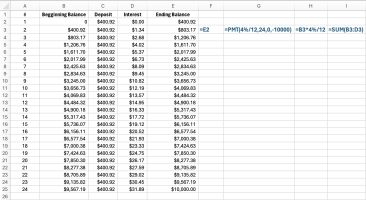logistic_guy
Senior Member
- Joined
- Apr 17, 2024
- Messages
- 2,212
here the question
Brad has nothing in his saving account right now, but realizes it would be a very good idea to build up a savings balance. His account pays \(\displaystyle 4\%\) interest. How much should he deposit each month if he wants to have \(\displaystyle \$10,000\) in this account in \(\displaystyle 2\) years?
here my answer
\(\displaystyle 4,901.96\)
i'll share my answer with latex later
Brad has nothing in his saving account right now, but realizes it would be a very good idea to build up a savings balance. His account pays \(\displaystyle 4\%\) interest. How much should he deposit each month if he wants to have \(\displaystyle \$10,000\) in this account in \(\displaystyle 2\) years?
here my answer
\(\displaystyle 4,901.96\)
i'll share my answer with latex later

